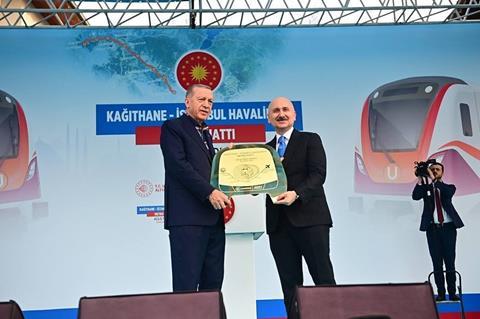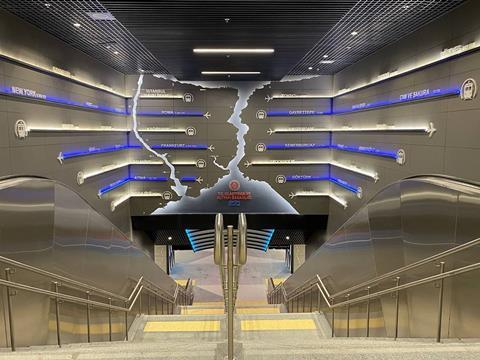
TURKEY: The 34 km first phase of metro Line M11 to Istanbul’s main airport opened on January 22, connecting Kağıthane on M7 with the main entrance of the airport and Kargo Terminali.
It was originally hoped that Line M11 would open with the airport, scheduled for February 2018. The airport opening was held up until April 2019, but construction of the metro was further slowed by funding issues and the Covid-19 pandemic.
The line is fully underground. It has a capacity of up to 800 000 passengers a day. Trains run every 3 min in the peaks, and although it is fully automated, there will be a member of staff on board for an unspecified initial period.
A station will open at the airport’s Terminal 2 in the future, and a one-station extension from Kağıthane to Gayrettepe on M2 is under construction with opening scheduled for June.
The six-station second phase of M11 between the airport and the western terminus of the Marmaray commuter line at Halkalı railway station is scheduled to be completed by the end of the year.
Construction

M11 is being built by a consortium of Turkey’s Kolin Inşaat and Şenbay Madencilik under a November 2016 contract worth €999·8m. Signalling is being supplied by defence electronics group Aselsan.
Speaking at the opening ceremony, Transport Minister Adil Karaismailoğlu said M11 was the longest metro line in Turkey to be constructed under a single tender, and also the fastest, with trains operating at up to 120 km/h. ‘We will complete our other metro investments and increase Istanbul’s rail network from 284·3 km to 380·2 km’, he said.
CRRC Zhuzhou has supplied 176 metro cars equipped for GoA4 unattended operation under a TL1·5bn contract awarded in April 2020, with 60% domestic content. They can operate in four or eight-car formations.
The line is owned by the Ministry of Transport & Infrastructure and operated by national railway operator TCDD Tasımacılık.
It is integrated into Istanbul’s metro system, but in common with other lines developed by the ministry, has been branded with its U symbol, instead of the opposition party-controlled municipality’s M logo.



